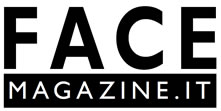ITALIAN VERSION
Elegante e riservata Basilea, contemporanea e notturna Zurigo. Le due città sono una continua scoperta per chi pensa alla Svizzera come a una meta turistica alpina e poco più. Certo, ci sono le montagne e sono bellissime, c’è la cioccolata, le banche, il welfare e ogni cosa che funziona proprio come.. un orologio svizzero! Ma il Paese, uno dei più prosperi – proprio pochi giorni fa ha bocciato la proposta referendaria dei sindacati per introdurre il salario minimo a 3mila euro, il più alto del mondo – è così vicino all’Italia ed è anche una grande occasione per gli amanti del design e dell’arte che con un piccolo tour possono godere di una quantità stupefacente di opere d’arte di alto valore e prestigio, fruibili al meglio, in luoghi ben organizzati, immersi nella natura o nel cuore della città. Accompagnando il tutto con una permanenza in alberghi incantevoli e ristoranti dove gustare l’arte culinaria di chef rinomati.
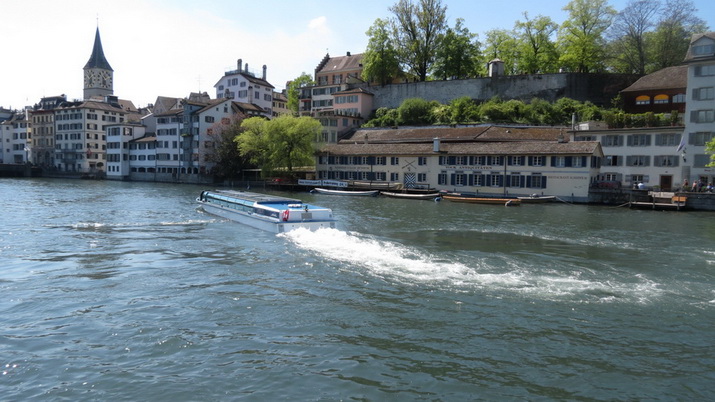
ZURIGO
Numerosi parchi, un lago, incantevoli colline intorno ed oltre 50 musei e più di 100 gallerie. Come la vicina Basilea, Zurigo è ricchissima di arte, soprattutto moderna e contemporanea. Non è un caso che qui sia nato il Movimento Dadaista, all’interno del Cabaret Voltaire, frequentato da artisti e politici internazionali che in città hanno trovato rifugio negli anni della guerra mondiale.
A metà strada tra Basilea e Lucerna, Zurigo è, con i suoi 400mila abitanti, la più grande città svizzera.
Zurigo è notturna e mondana, fulcro dei nuovi stimoli e delle avanguardie musicali. È qui che ogni anno in estate, sfila per le strade della città, la Street Parade, il maggiore festival di musica elettronica in Europa, che quest’anno si svolgerà il 2 agosto, con oltre 100 tra parties ed eventi.
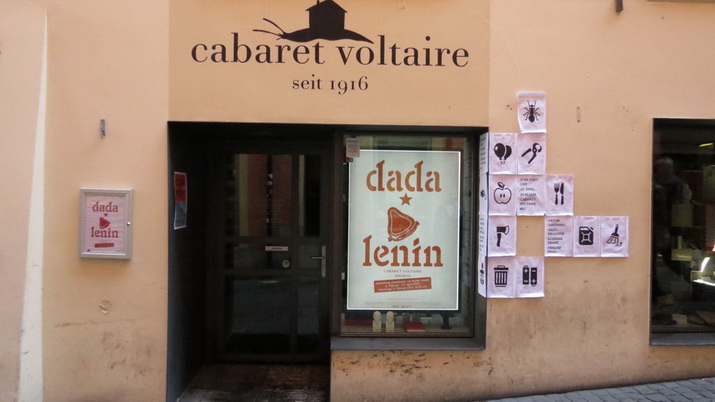
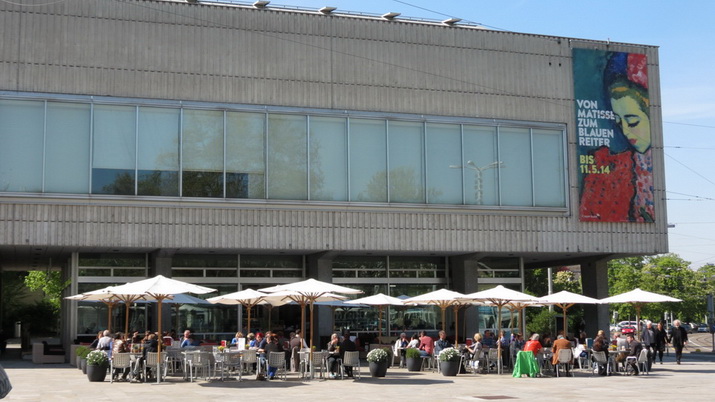
Kunsthaus Zurich ospita la collezione di arte moderna e contemporanea più ricca di Zurigo, dal medioevo ad oggi. Accanto alle opere di Alberto Giacometti, sono esposte le opere di esponenti di spicco dell’arte svizzera degli ultimi due secoli come Fussli, Hodler, Rist, Fischli. Nel 2012 tramite un referendum, la popolazione ha votato per l’ampliamento della struttura e le nuove aree, con il progetto di David Chipperfield, saranno inaugurate nel 2017. Il centro Löwenbräukunst, ristrutturato invece pochi anni fa, è un vero e proprio scrigno per gallerie, musei, editori e librai. In autunno gli amanti dell’arte non possono perdere la Fiera dell’Arte Internazionale che ogni anno presenta il meglio del panorama contemporaneo per artisti, galleristi, collezionisti e semplici appassionati. Così come non possiamo non consigliare agli amanti del design una visita al Haus Konstruktiv, l’unica istituzione in Svizzera interamente dedicata all’arte concreta, costruttiva e concettuale. Chi invece predilige i classici si fermi al Museum Bellerive.
Oltre Bahnofstrasse, celebre via del lusso e dello shopping mondiale, la metropoli da vivere, di giorno e ancor di più di notte, simbolo della Zurigo contemporanea, è nella zona Ovest della città.
Qui, non si respira più la fuliggine delle fabbriche di un tempo. Quegli spazi enormi sono stati convertiti negli anni in progetti di teatro e danza, atelier d’arte e di artigianato, studi grafici, cinema, club e locali. Zurigo è diventata così metropoli di cultura e mondanità, al pari delle più vivaci capitali europee. Designer, creativi, stilisti hanno inventato, creato, osato e Zurigo è risultata la seconda città più vivibile al mondo secondo la classifica pubblicata quest’anno da Mercer.

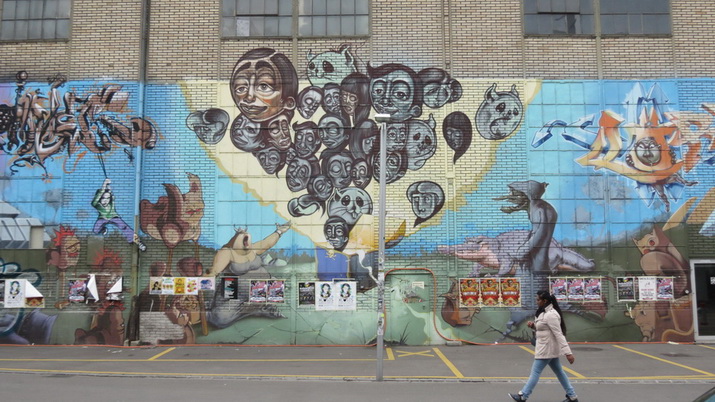
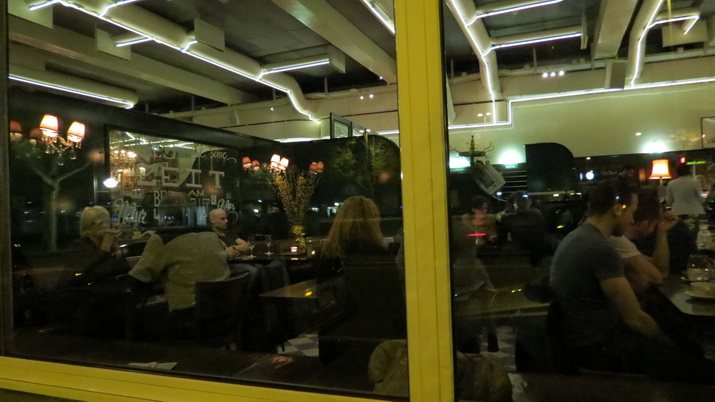
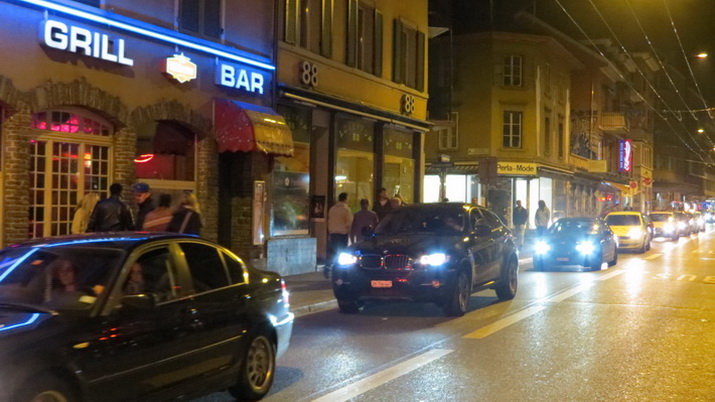
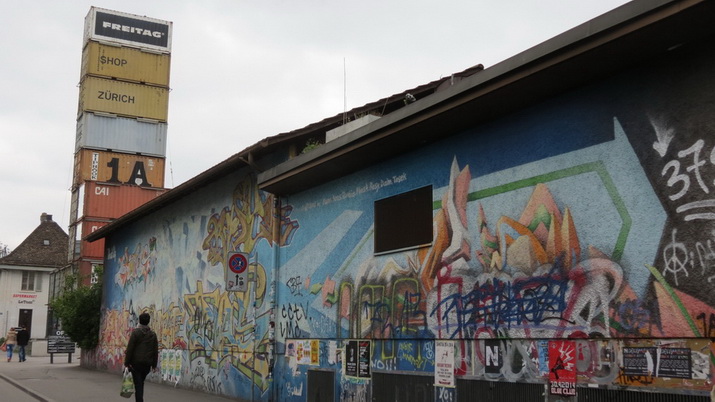
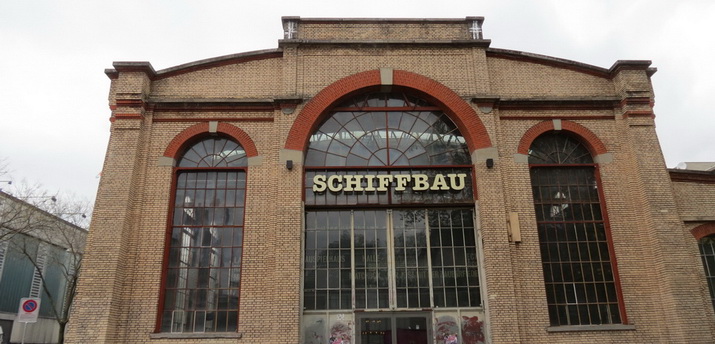
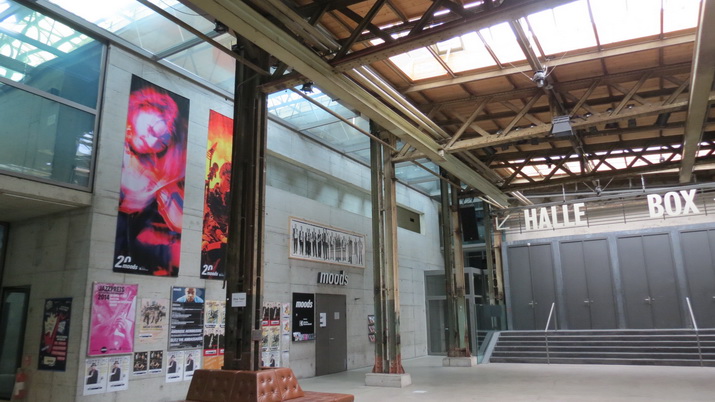
.
La rinascita di Zurigo Ovest è iniziata nel 2000 con l’apertura dello Schiffbau, ex cantiere navale divenuto centro culturale e operativo del teatro di prosa. Una “torre” realizzata con 17 container arrugginiti accatastati uno sopra l’altro ospita invece il marchio di culto Freitag con le sue borse create da teloni di camion riciclati. Tra i simboli della Nuova Zurigo, i tre viadotti del quartiere – Aussersihl, il Wipkingerviadukt e il Lettenvia – ospitano oggi, sotto i loro archi, negozi di moda e design, bar, ristoranti e un vivace mercato lungo 500 metri, con gastronomie, negozi di libri antichi, bar di tapas, gallerie, e laboratori artistici.
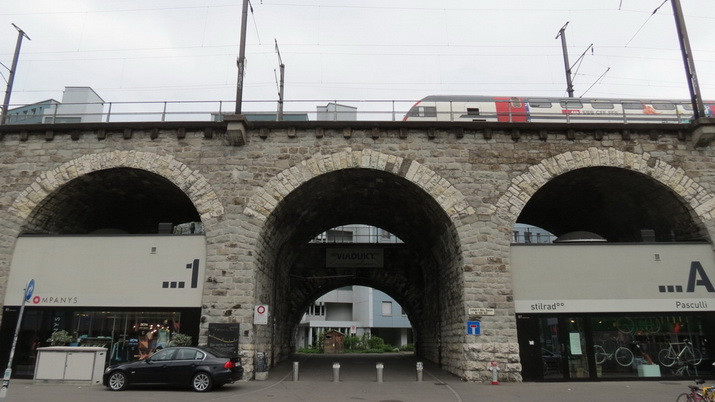
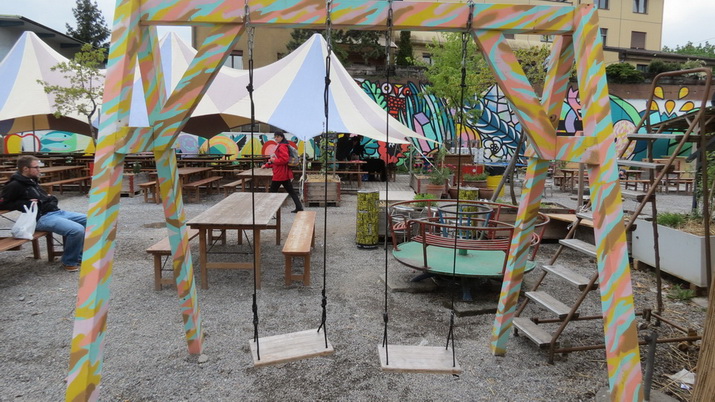
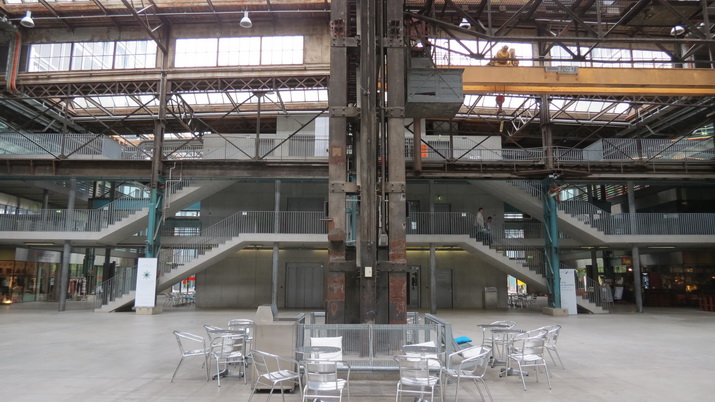
“Zurigo merita viaggi, merita passaggi, merita di essere camminata, fra il silenzio irreale della stazione e la chiassosa allegria del Kreis 4”. La scrittrice Francesca Mazzucato ha scritto per FaceMagazine lo scorso dicembre un viaggio appassionato, poetico ed emozionante (leggi qui il reportage Zurigo la città sfida).
Zurigo è anche una città molto verde e non solo per i suoi numerosi parchi: nel 1898, Ambrosium Hilti inaugurava qui il primo ristorante vegetariano del mondo. Hitli è oggi uno dei più grandi e frequentati. Vegetariani e amanti della cultura bio trovano tutto ciò che possono desiderare. E qui possono gustare il buffet di insalate più grande della città, con 40 tipi diversi, un buffet asiatico, succhi di frutta freschi e un menu molto variegato, in un ambiente accogliente ed elegante, raffinato e moderno
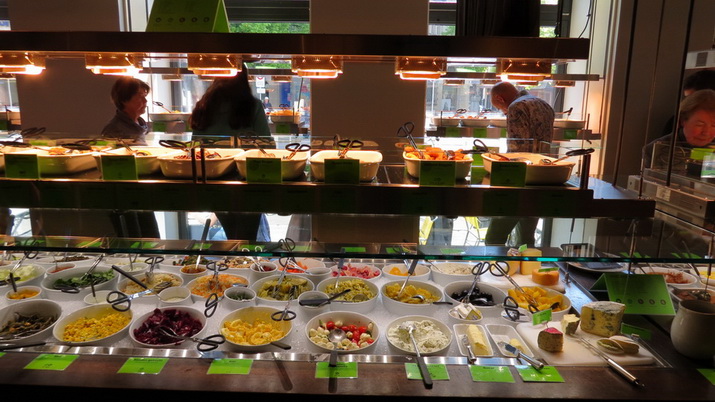
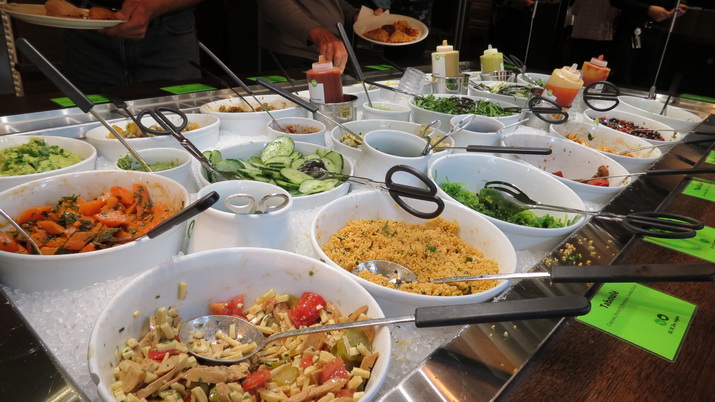 Zurigo è accoglienza di qualità e buona tavola. Hotel Helvetia, con le sue 14 affascinanti camere e i 2 appartamenti Business di lusso nell’attico, è un vero gioiello nel cuore della città. Nel suo ristorante in stile liberty e moderno, si possono gustare i piatti della rinomata chef Françoise Wicki.
Zurigo è accoglienza di qualità e buona tavola. Hotel Helvetia, con le sue 14 affascinanti camere e i 2 appartamenti Business di lusso nell’attico, è un vero gioiello nel cuore della città. Nel suo ristorante in stile liberty e moderno, si possono gustare i piatti della rinomata chef Françoise Wicki.
.
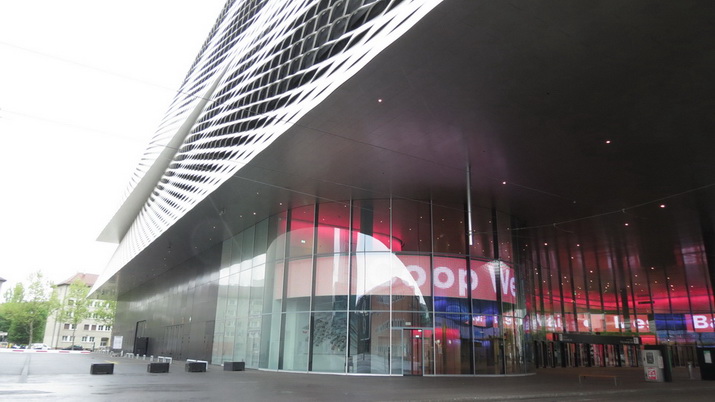 BASILEA
BASILEA
A Basilea tutto parla di arte. D’altronde la terza città della Svizzera (170mila abitanti), comodamente adagiata sul Reno, è la sede di Art Basel, una delle più grandi fiere mondiali dell’arte moderna e contemporanea. Creata nel 1970 dai galleristi e collezionisti Trudi Bruckner, Balz Hilt e Ernst Beyeler, la fiera di Basilea attira ogni anno a giugno più di 60mila visitatori tra addetti ai lavori e semplici appassionati. L’enorme successo dell’evento ha portato ad espandersi Art Basel a Miami Beach (2002) e Hong Kong (2013). Al di fuori di giugno Messe Basel, la sede della fiera, merita comunque una visita. Il nuovo padiglione progettato dagli architetti Herzog & De Meuron, nativi di Basilea, è caratterizzato da uno sviluppo orizzontale e da una superficie di effetti ottici lamellari mentre, proprio al centro della Messeplatz, si apre un enorme e scenografico foro circolare che collega la terra al cielo.
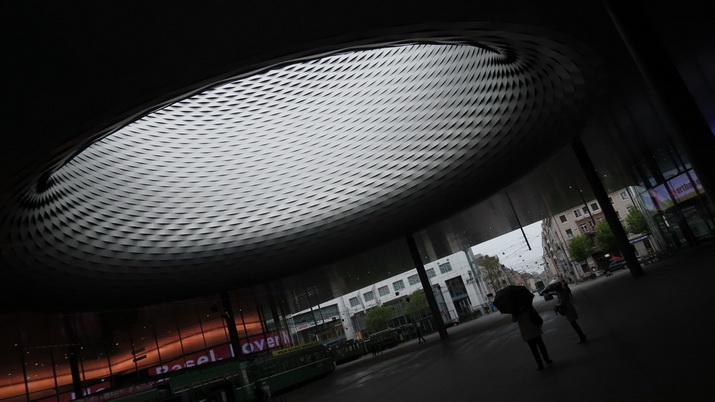
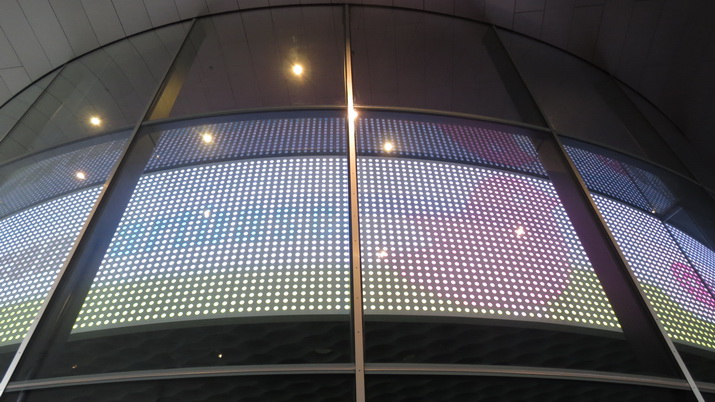 Altre opere e palazzi di archistar come Richard Meier, Frank O. Gehry e Mario Botta si annidano nella città e nella mega sede, visitabile solo attraverso prenotazione con l’ufficio del turismo, del colosso farmaceutico Novartis che fornisce ben 10 mila posti di lavoro nel solo campo della ricerca. Non lontano lo Stellwerk è l’ex stazione di St Johann convertita in atelier per artisti che ospita anche un grazioso bistrot affacciato sui binari dismessi. Consigliato per concedersi una pausa… artistica, naturalmente!
Altre opere e palazzi di archistar come Richard Meier, Frank O. Gehry e Mario Botta si annidano nella città e nella mega sede, visitabile solo attraverso prenotazione con l’ufficio del turismo, del colosso farmaceutico Novartis che fornisce ben 10 mila posti di lavoro nel solo campo della ricerca. Non lontano lo Stellwerk è l’ex stazione di St Johann convertita in atelier per artisti che ospita anche un grazioso bistrot affacciato sui binari dismessi. Consigliato per concedersi una pausa… artistica, naturalmente!
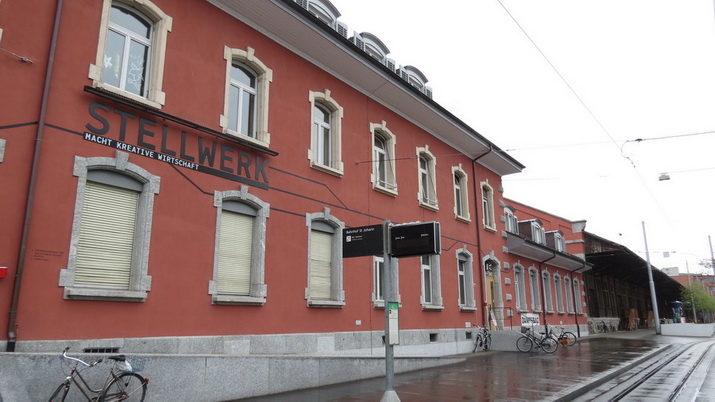
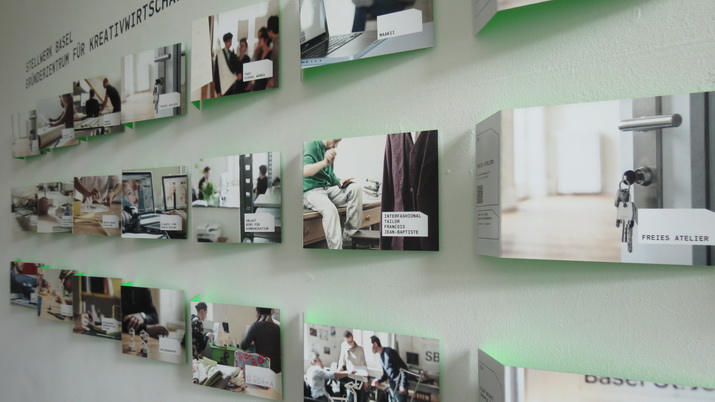
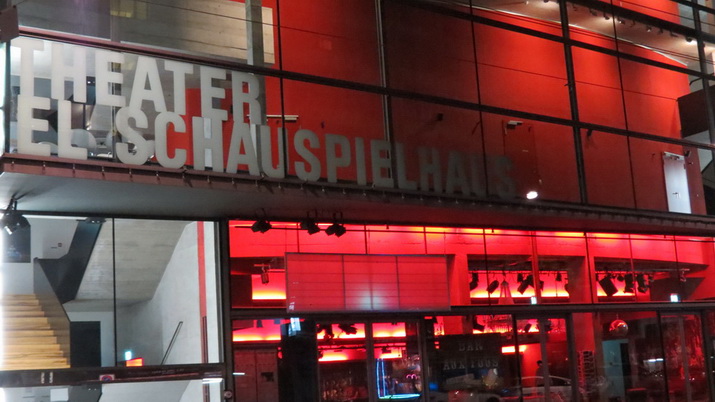
Il giro può poi proseguire per le gallerie d’arte e scegliendo tra i 40 (si, 40!) musei della città. Tra questi il Museum Tinguely, il Kunstmuseum e il Vitra Design Museum (dove troverete anche il primo edificio dell’archistar Zaha Hadid). Ma se il tempo è poco non potete mancare la Fondation Bayeler, il museo progettato da Renzo Piano nel 1997 per ospitare l’imponente collezione dei mecenati Hildy e Ernst Beyeler. L’edificio in porfido rosso, basso e ricco di vetrate, si fonde perfettamente con la natura circostante.
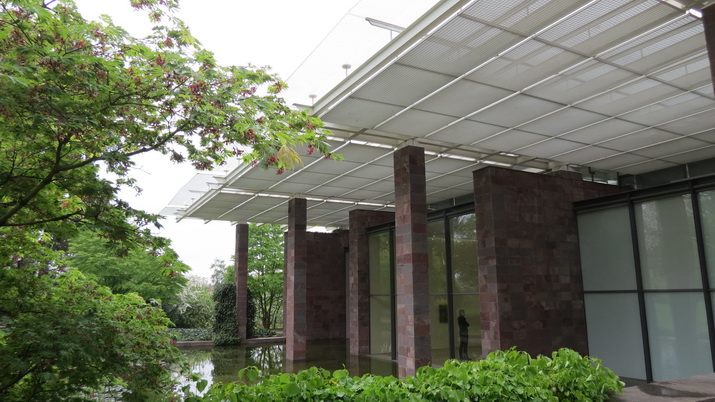
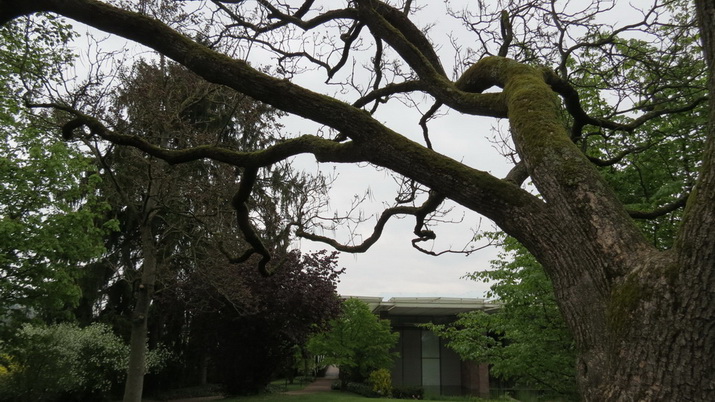 Tra campi coltivati, alberi in fiori e corsi d’acqua, all’interno dell’edificio si possono ammirare circa 230 opere di artisti come Cézanne, Van Gogh, Mirò, Mondrian, Kandinsky, Picasso, Rothko, Paul Klee e numerosi altri. L’esposizione dei quadri e delle sculture gioca continuamente con il paesaggio esterno e con la luce naturale, creando la migliore delle atmosfere per godere di così tanta arte. La Fondazione ospita anche mostre temporanee di grande rilievo, l’ultima quella dedicata al maestro del simbolismo francese Odilon Redon. Anche la notte può essere artistica a Basilea, soprattutto se si decide di pernottare nell’hotel Teufelhof che, nel cuore della città vecchia, ospita due ristoranti, un teatro e stanze di assoluto charme decorate da artisti.
Tra campi coltivati, alberi in fiori e corsi d’acqua, all’interno dell’edificio si possono ammirare circa 230 opere di artisti come Cézanne, Van Gogh, Mirò, Mondrian, Kandinsky, Picasso, Rothko, Paul Klee e numerosi altri. L’esposizione dei quadri e delle sculture gioca continuamente con il paesaggio esterno e con la luce naturale, creando la migliore delle atmosfere per godere di così tanta arte. La Fondazione ospita anche mostre temporanee di grande rilievo, l’ultima quella dedicata al maestro del simbolismo francese Odilon Redon. Anche la notte può essere artistica a Basilea, soprattutto se si decide di pernottare nell’hotel Teufelhof che, nel cuore della città vecchia, ospita due ristoranti, un teatro e stanze di assoluto charme decorate da artisti.
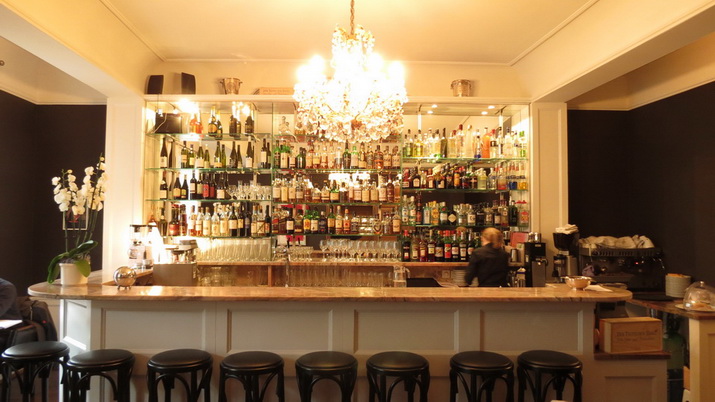
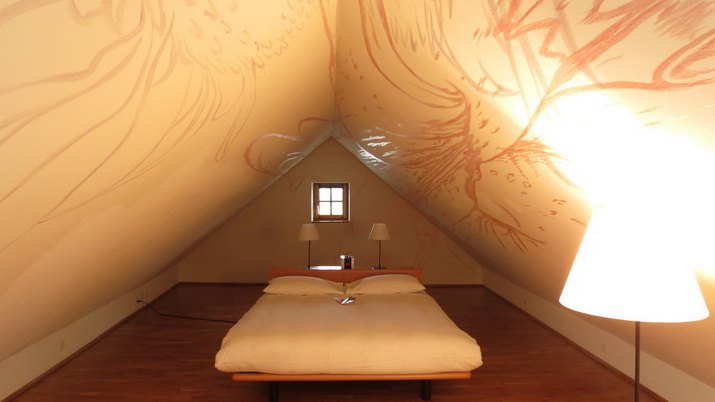
DOVE MANGIARE
A BASILEA: Restaurant Löwenzorn, Gemsberg 2/4, CH-4051 Basel www.loewenzorn.ch
A ZURIGO: Hitli, Sihlstrasse 28, 8001 Zürich, Tel. +41 (0)44 227 70 00, Fax +41 (0)44 227 70 07, info@hiltl.ch, www.hiltl.ch
DOVE DORMIRE
A BASILEA: Radisson Blu Hotel Basel, Steinentorstrasse 25, CH-4001 Basel www.radissonblu.com/hotelbasel
A ZURIGO: Hotel Helvetia, Stauffacherquai 1 8004 Zürich Tel. +41 44 297 99 98 info@hotel-helvetia.ch www.hotel-helvetia.ch
Tutte le foto del nostro reportage | Cliccate qui
J
![]()
ENGLISH VERSION
Graceful and discreet Basel, contemporary and nocturnal Zurich. These two cities are a continuous discovery for those who think of Switzerland as an Alpine tourist destination and little more. Of course, there are mountains and they are beautiful, there is chocolate, banks, welfare, and everything runs like a Swiss clock. However, the Country, one among the wealthiest – only few days ago rejected the referendum proposal supported by the trade unions to introduce the minimum salary at three thousand euros, the highest in the world – is very close to Italy and represents a unique opportunity for design and art lovers who can enjoy of an astonishing moltitude of prestigious masterpieces, easily accessible within well-organized facilities, immersed into nature or in the city heart. The whole being combined with a stay in enchanting hotels and restaurants where to try the culinary art of renowned chefs.
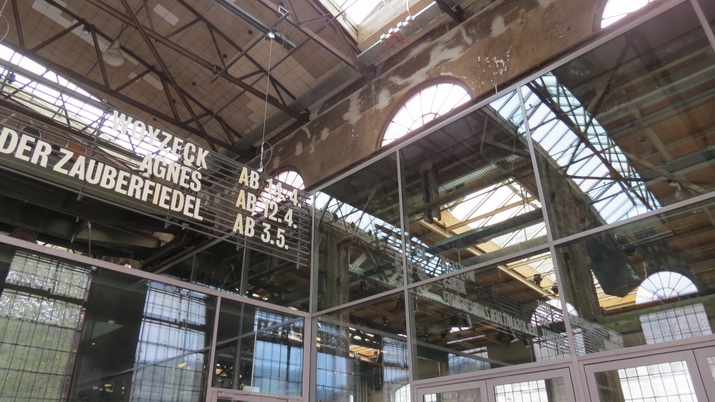
ZURICH
Numerous parks, a lake, beautiful hills and over 50 museums and more than 100 galleries. Like the neighbouring Basel, Zurich is abundant in art, mainly modern and contemporary. It is no coincidence that here the Dadaist Movement was born, within the Cabarait Voltaire, rendezvous for international artists and politicians finding shelter during the world war years.
Midway between Basel and Lucerne, Zurich, with its 400 thousand inhabitants, is the largest city in Switzerland.
Zurich is nocturnal and ephemerous, hub for new ideas and avant-garde music . This is where every year in the summer the Street Parade takes place, the most important festival of electronic music in Europe, that will occur on August 2 this year, with more than 100 parties and events.
Kunsthaus Zurich hosts a collection of modern and contemporary art, the richest in Zurich, from Middle Age to nowadays. Beside the works by Alberto Giacometti, are the works by leading figures of Swiss art of the last two centuries, like Fussli, Hodler, Rist, Fischli. In 2012 citizens voted a referendum to enlarge the building. The new areas, designed by David Chipperfield, will be inaugurated in 2017. The “Löwenbräukunst” centre, renovated few years ago, is a real chest for galleries, meuseums, publishers and booksellers. In autumn art lovers cannot miss the Art International Zurich, presenting each year the best of contemporary art scene for artists, gallery owners, collectors and enthusiasts.
And we cannot but recommend to design lovers a visit to Haus Konstruktiv, the only institution in Switzerland completely dedicated to real, constructive and conceptual art. To those who prefer the traditional art we suggest the Museum Bellerive.
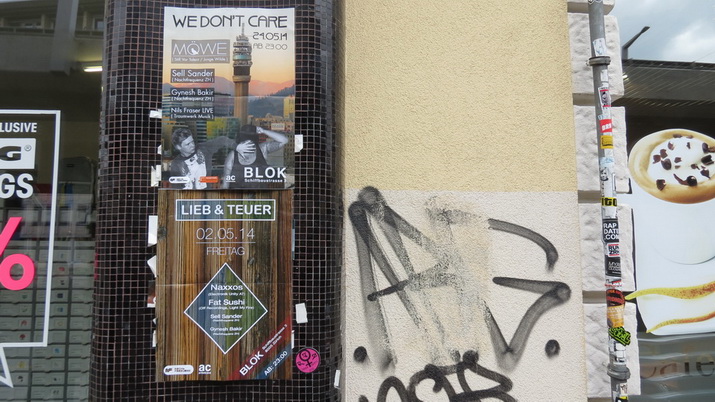
Bahnofstrasse, the famous luxory and shopping street, the place to live at day and even more at night, the symbol of contemporary Zurich, is in the West side of the city.
Here you do not breathe anymore the ancient soot of the factories. Those huge spaces have been transformed over the years into projects of theatre and dance, art and craft studios, graphic design studios, cinemas, clubs and bars. This way Zurich has become a metropolis of culture and social life, as the most lively European capitals. Designer and artists have invented, created, and dared so much than Zurich has been recocgnised as the second most liveable city in the world according to the ranking published this year by Mercer.
The rebirth of West Zurich began in 2000 with the opening of the Schiffbau, a former shipyard that became a cultural centre of the theatre prose. Instead a “tower”, made with 17 rusty containers stacked one upon the other, hosts the cult label Freitag with its bags created from recycled truck tarpaulins. Among the symbols of the New Zurich, the three viaducts of the neighborhood – Aussersihl, the Wipkingerviadukt and Lettenvia – host now, under their bows, fashion and design shops, bars, restaurants and a lively market 500 meters long, with delis, old book shops, tapas bars, galleries, and art workshops.
“Zurich deserves travel, deserves visits, deserves to be explored, between the eerie silence of the station and the boisterous merriment of the Kreis 4”. The writer Francesca Mazzucato wrote last December for FaceMagazine a passionate trip, poetic and exciting (click here to read the report the Zurich the city challenge).
Zurich is also a very green city, and not just for its many parks: in 1898, Ambrosium Hilti inaugurated here the first vegetarian restaurant in the world. Hitli is now one of the largest and busiest restaurants where vegetarians and bio lovers find all they can desire. And here we can enjoy the largest buffet of salads in the city, with 40 different types of salads, an Asian buffet, fresh juices and a very varied menu in a welcoming, elegant, sophisticated and modern environment.
Zurich is a quality welcoming and good food. Helvetia Hotel, with its 14 charming rooms and 2 luxury apartments in the attic, is a real gem in the heart of the city. In its Art Deco restaurant, you can taste the famous dishes of the well known chef Françoise Wicki.
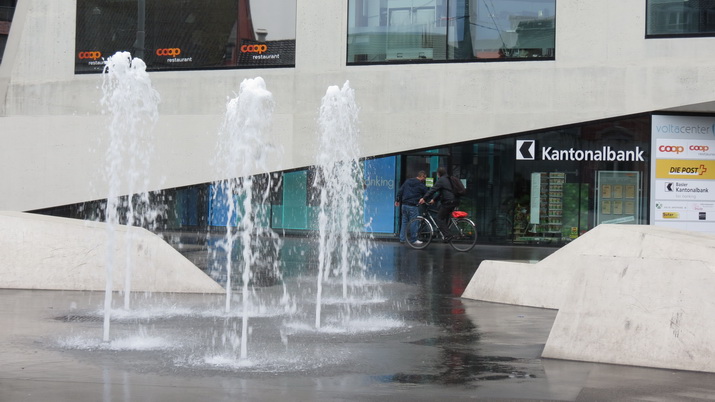
BASEL
In Basel, everything talks about art. Moreover, the third largest city in Switzerland (170 thousand citizens), laying comfortably down the Rhine, is the location of Art Basel, one of the largest international exhibitions of modern and contemporary art. The Basel fair was conceived in 1970 by gallery owners and collectors Trudi Bruckner, Balz Hilt, and Ernst Beyeler, and each year in June it attracts more than 60 thousand visitors among professionals and amateurs. The huge success of the event led to expand Art Basel in Miami Beach (2002) and in Hong Kong (2013). Beside this huge event that takes place in June, Messe Basel, the headquarters of the fair, are still worth a visit. The new pavilion designed by the architects Herzog & De Meuron, Basel native, is characterized by a horizontal surface and a laminated optical effects while, right in the middle of the Messeplatz, there is an enormous and spectacular circular hole that connects the earth to the sky. You can easily find other works and buildings of atarchitects such as Richard Meier, Frank O. Gehry and Mario Botta in the city and in mega headquarters, that can be visited only through a reservation with the tourist office, of the pharmaceutical giant Novartis providing as many as 10 thousand jobs only in the field of research. Not far from the Stellwerk is the former station of St Johann converted into artists studios that also hosts a charming bistro overlooking the disused tracks. It is a place recommended for taking a break … an art break, of course! Then the tour continue with art galleries where you can choose between the 40 (yes, 40!) museums of the city. Among these, the Tinguely Museum, the Fine Arts Museum and the Vitra Design Museum (where you will also find the first building by star architect Zaha Hadid). But if you only visit Basel for a couple of days you cannot miss the Fondation Bayeler, the museum designed by Renzo Piano in 1997 to host the impressive collection of Hildy and Ernst Beyeler patrons. The building in red porphyry, short and rich of stained glass, blends perfectly with the natural surroundings. Among the cultivated fields, trees and water courses, inside the building you can admire about 230 masterpieces by artists such as Cézanne, Van Gogh, Miro, Mondrian, Kandinsky, Picasso, Rothko, Paul Klee and many others. The exhibition of paintings and sculptures play continuously with the external landscape and natural light, creating the best atmosphere to enjoy so much art. The Foundation also hosts temporary exhibitions of great importance, the last one dedicated to the master of French Symbolism Odilon Redon (up to 18/5). Even the night can be artistic in Basel, especially if you decide to stay overnight in the hotel Teufelhof that is in the heart of the old city and has two restaurants, a theatre and rooms full of charm and decorated by artists.
WHERE TO EAT
BASEL: Restaurant Löwenzorn, Gemsberg 2/4, CH-4051 Basel www.loewenzorn.ch
ZURICH: Hitli Sihlstrasse 28, 8001 Zürich, Tel. +41 (0)44 227 70 00, Fax +41 (0)44 227 70 07, info@hiltl.ch,www.hiltl.ch
WHERE TO SLEEP
BASEL: Radisson Blu Hotel Basel, Steinentorstrasse 25, CH-4001 Basel www.radissonblu.com/hotelbasel
ZURICH: Hotel Helvetia, Stauffacherquai 1 8004 Zürich Tel. +41 44 297 99 98 info@hotel-helvetia.ch www.hotel-helvetia.ch
Traduzione di Tatiana Panetta | tatiana.panetta@gmail.com
